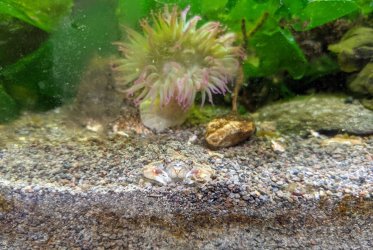I would really like to make a saltwater bio type of a beach near me called Swami’s. Swami’s has tidepools, and it is filled with life. I want to create a biotype of the tidepools there. Unfortunately, you are unable to collect animals, or even rocks at swamis, so that leaves me looking for the most common fish in Swami’s tidepools. So this is the stock that I want:
5 Tidepool Sculpins
A few Kelp or Shore crabs.
Multiple periwinkle snails
1 Sunburst Anemones
Derby Bryozoan
1 Sand Dollar
Some kind of small nudibranch - Hopkins rose, Spanish shawl, something like that
Volcano or Rough Limpet
A few broken-back shrimp
A few small kelp leaves
Sea Lettuce
Some kind of small plants
2 Chitons
Some Scavenging Isopods
So, here are my questions. Will a 20-30g tank be good for all of this? What salinity is normal for tidepools? How much will this all cost? Do I need a chiller?
Do I need to cycle the tank, or can I use media from my freshwater tanks?Any And all information is useful.
Thanks for reading!
5 Tidepool Sculpins
A few Kelp or Shore crabs.
Multiple periwinkle snails
1 Sunburst Anemones
Derby Bryozoan
1 Sand Dollar
Some kind of small nudibranch - Hopkins rose, Spanish shawl, something like that
Volcano or Rough Limpet
A few broken-back shrimp
A few small kelp leaves
Sea Lettuce
Some kind of small plants
2 Chitons
Some Scavenging Isopods
So, here are my questions. Will a 20-30g tank be good for all of this? What salinity is normal for tidepools? How much will this all cost? Do I need a chiller?
Do I need to cycle the tank, or can I use media from my freshwater tanks?Any And all information is useful.
Thanks for reading!



